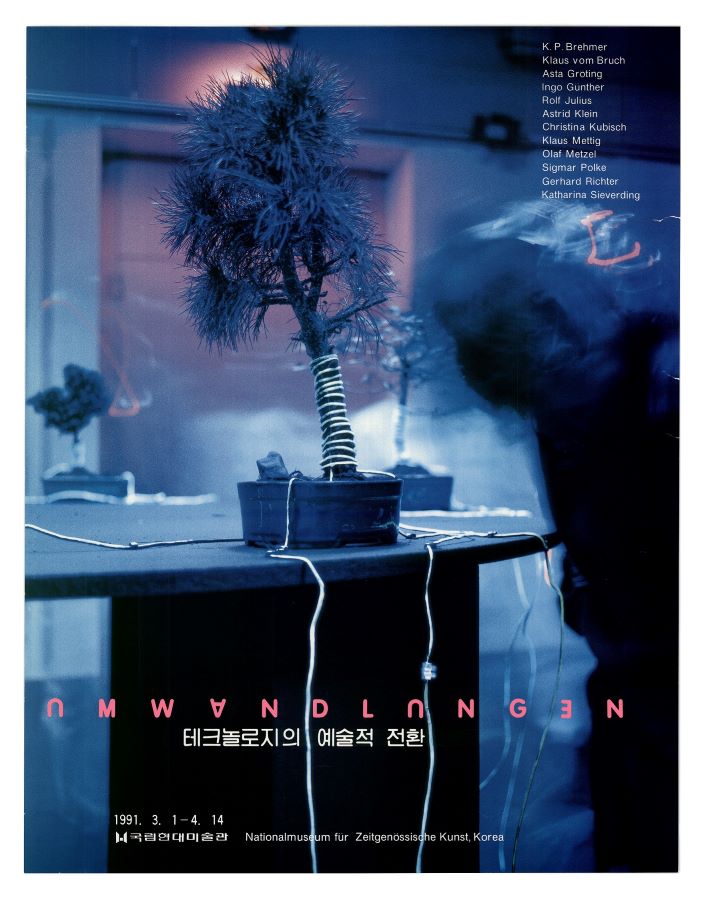
UMWANDLUNGEN: The Artistic Conversion of Technology, Poster, 1991, MMCA Art Research Center Collection
Technology art
* Source: Multilingual Glossary of Korean Art by Korea Arts Management Service
Related
-
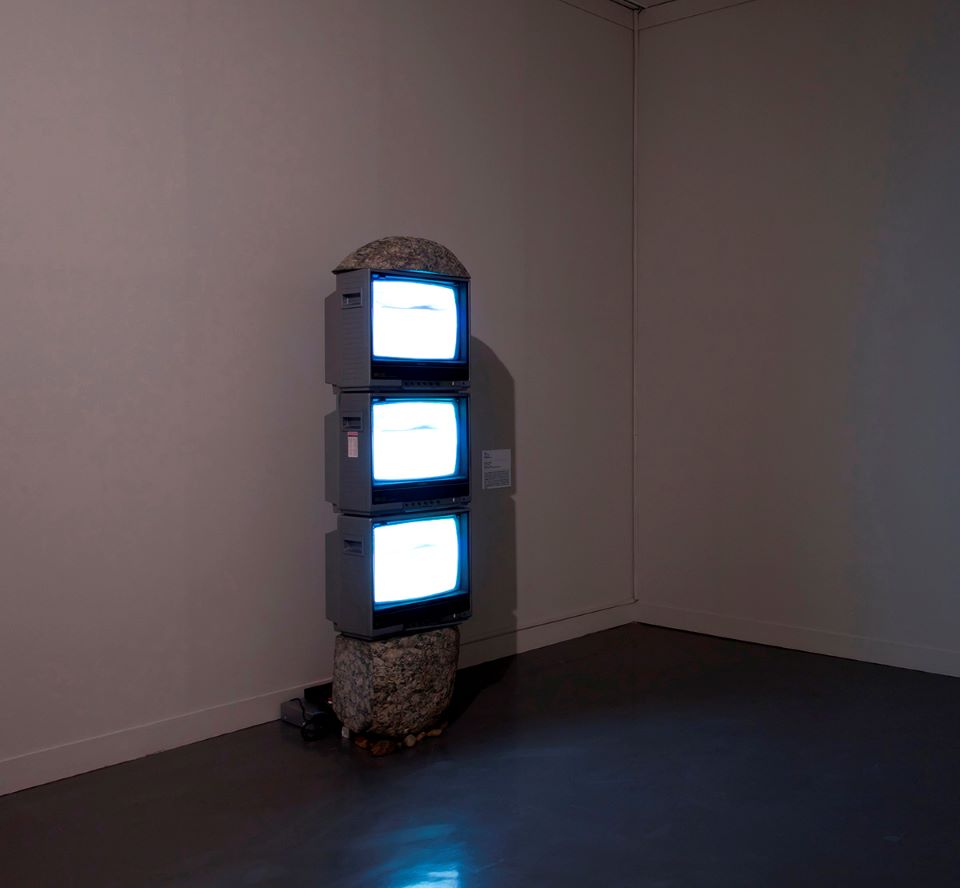
Media art
Media art refers to artworks produced using media scientific technology. It is also called new media art. The term became popularized as it was used by Les Levine in the Software exhibition held at the Jewish Museum in New York in 1970. Media art utilizes as its main media the primary means of communication in contemporary society, including books, magazines, newspapers, films, radio, televisions, videos, and computers. In and after the 1980s, a vast body of works that were based on computer technology and emphasized interaction between them and the audience were created, leading to the emergence of interactive art.
-
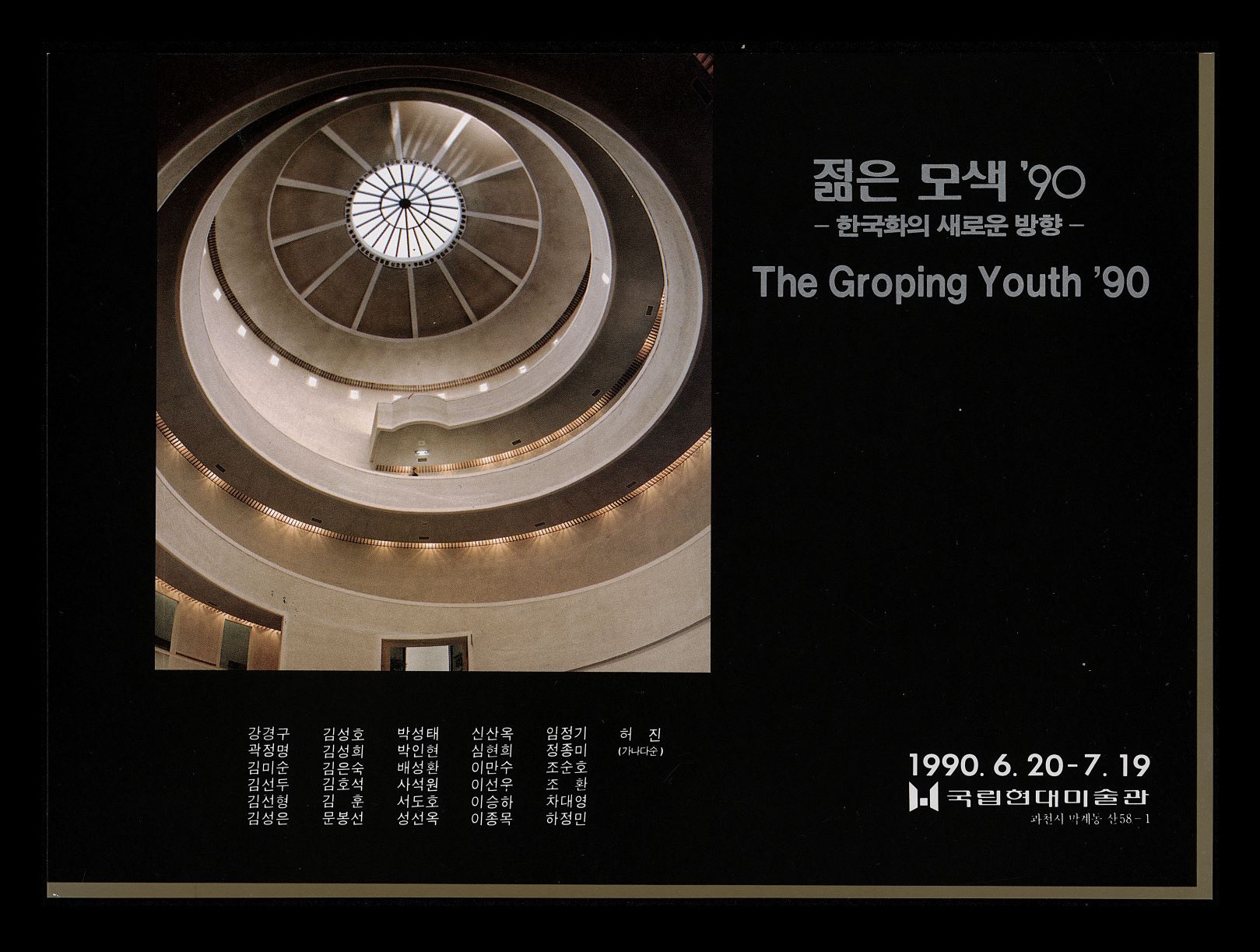
Young Korean Artists
An exhibition held every two years at the National Museum of Modern and Contemporary Art, Korea since 1981. The purpose of the exhibition is to showcase young artists who produce diverse, experimental work, regardless of theme. From the first to fifth exhibition, it was called the The Korean Young Artists Biennale, and starting with the sixth exhibition in 1990, the name was changed to Young Korean Artists. The thirtieth anniversary exhibition was held from April 17 to June 6, 2010, and the exhibition was held in both 2013 and 2014. The exhibition was not held between 2015 and 2018, but has been resumed for 2019. The exhibition is considered as a notable venue for the examination of the emerging issues and trends in contemporary Korean art.
-
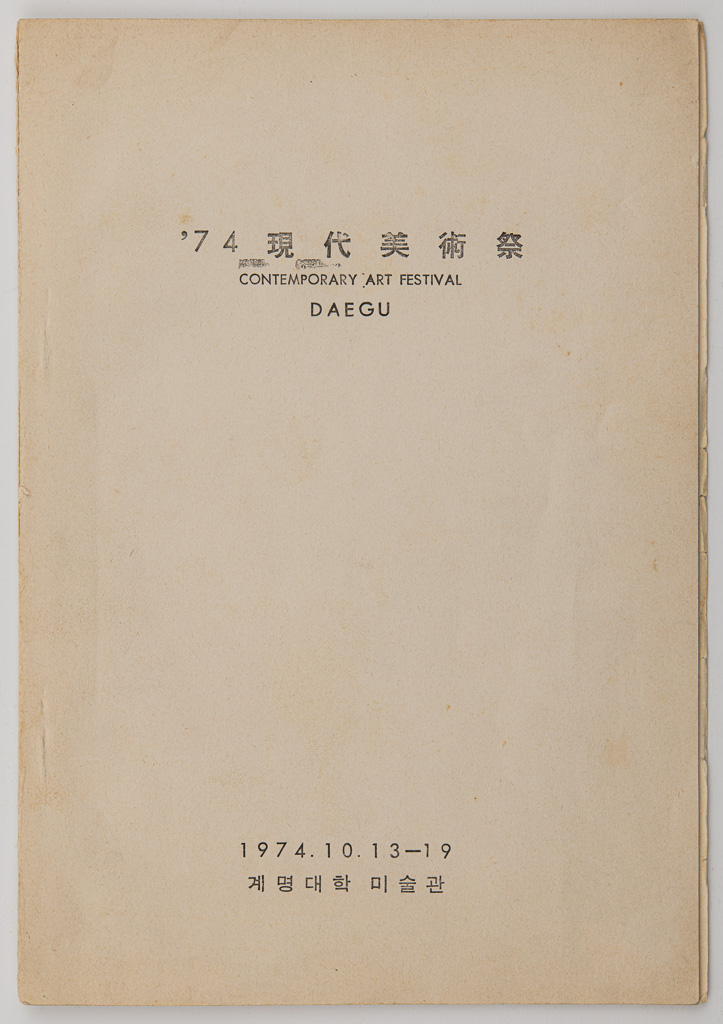
Daegu Contemporary Art Festival
The Daegu Contemporary Art Festival was an annual contemporary art festival held in Daegu between 1974 and 1979. Three-dimensional works and paintings were frequently presented in the festival. The first exhibition (1974) and second exhibitions were primarily held in indoor exhibition halls, but the third exhibition expanded its venue to include both indoor and outdoor spaces. This third exhibition was divided into two parts, a major component of which was Lee Kangso, Park Hyunki, Chong Jaekyoo, Lee Jongyoon, and Jang Jeongjin’s collective outdoors piece titled Event in Nature. In addition, the Korean Art Association board members, including Park Seobo and Ha Chonghyun, came to Daegu to moderate a panel discussion about contemporary art and the concerns of avant-garde artists for the third exhibition. In the fourth exhibition, a significant inclusion was the video works of Park Hyunki, Kim Deoknyun, and Kim Youngjin, while in the fifth and final iteration of the festival, Lee Kun-Yong reenacted his piece Logic of Place, initially staged at the AG Exhibition (1975). In the contemporary period, The Gangjeong Daegu Contemporary Art Festival (Gangjeong daegu hyundae misulje), incepted in 2012, has continued in its tradition.
Find More
-
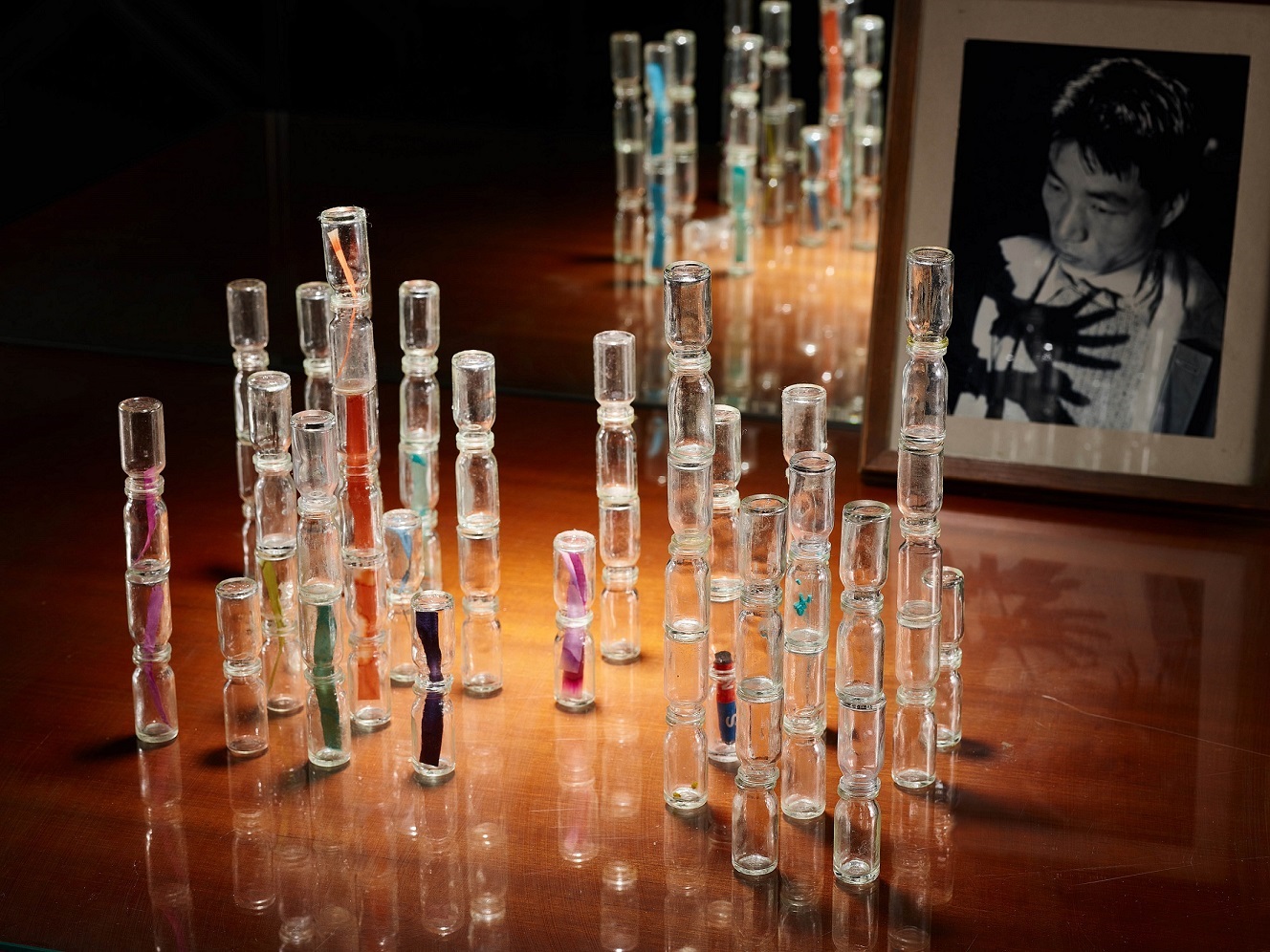
Kang Kukjin
Kang Kukjin (1939-1992) was a leading artist in experimental art that emerged in Korean art scene from the late 1960s through the 1970s. In 1965, he graduated from the College of Fine Arts at Hongik University. In 1964, Kang Kukjin founded the Non Col, advocating a break with the established generation. He joined the Sinjeong Group in 1967 and worked in experimental art with objets, installations, and happenings. Participating in the Union Exhibition of Korean Young Artists held in 1967 along with Chung Chanseung, Jung Kangja, and others, Kang staged Happening with Vinyl Umbrella and Candle, the first performance art in Korea. In the following year, he performed Transparent Balloon and Nude and Murder at the Han Riverside. Later, Kang expanded the scope of his contemporary art by devoting himself to three-dimensional works and installations. He also led the popularization of printmaking by opening the first printmaking workshop in 1971. In the mid-1970s, he resumed painting. From then on, he produced the Rhythm series (1985) that explored Korean sentiments through repeated line drawings and the Light of History series (1989) that sought the original form of Korean beauty in historical artifacts like ancient clay figurines and Buddhist images. In 2019, the Kang Kukjin Print Award was established by the Kang Kukjin Foundation and Korean Contemporary Printmakers Association [Hanguk hyeondae panhwaga hyeophoe].
-
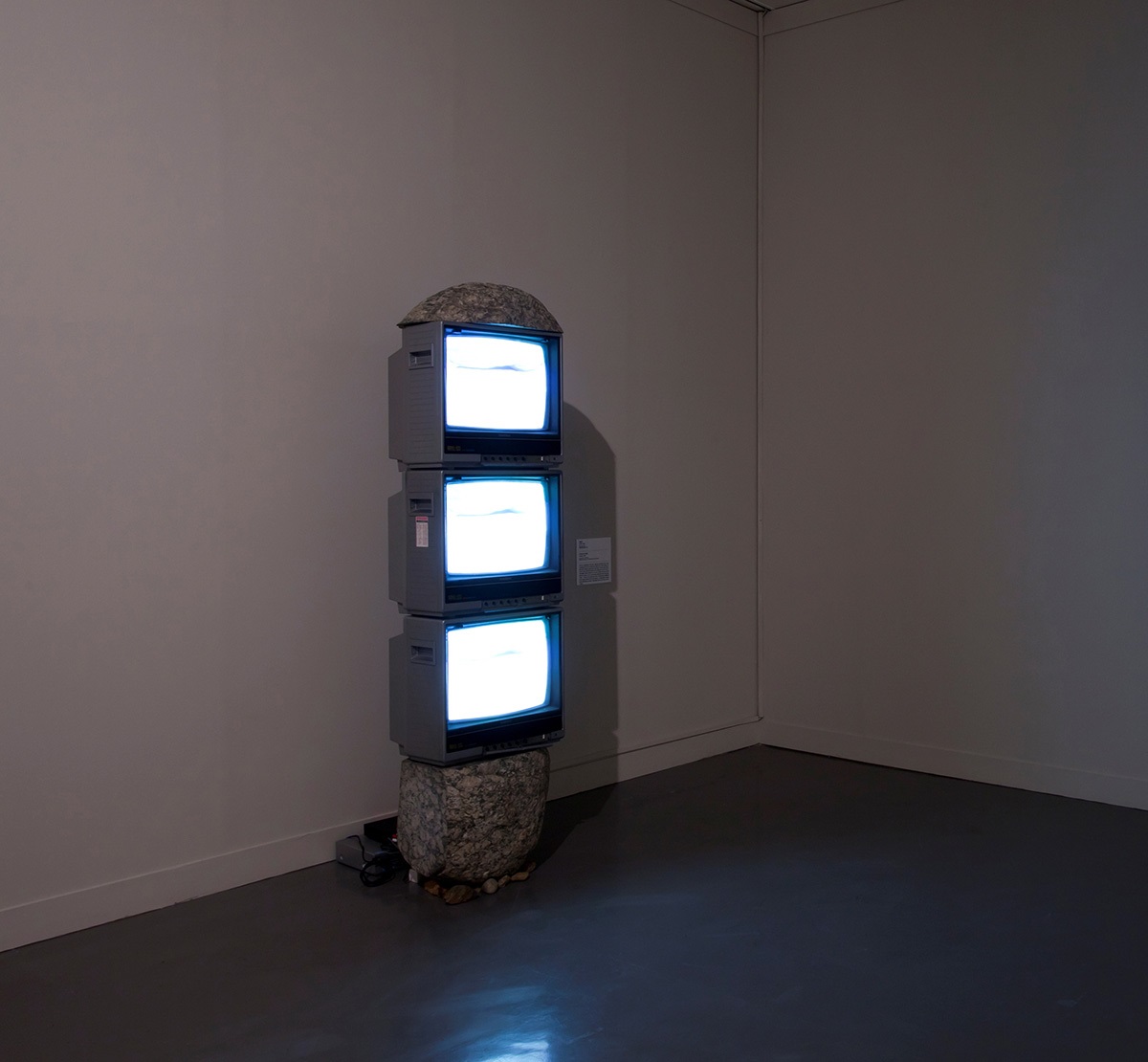
Park Hyunki
Park Hyunki (1942-2000) was a pioneering Korean video artist whose work focused on natural objects, such as water and stone, primarily using the medium of video. His oeuvre encompasses drawing, installation, performance art, and photography, among other genres. Born in Osaka, Japan, the artist returned to Daegu, his family’s hometown, in 1945 and settled in the city. He enrolled in the Department of Painting in the College of Fine Arts at Hongik University in 1961, but later changed his major to architecture. After graduation, he engaged both in the interior design business and artistic endeavors. Park has participated in the avant-garde art exhibition Daegu Contemporary Art Festival in Daegu since 1977. He was the first to experiment with video as a medium, thus significantly contributing to the development of Korean video art and the regional dissemination of experimental art. At the same time, he continued to join international exhibitions. The Water Tilting Performance featured at the Fifteenth São Paulo Biennale (1979) and Untitled (TV Stone Tower) submitted to the Eleventh Paris Biennale (1980) are the artist’s notable works that merge nature and media. In 1981, he also presented the performance project Pass through the City, in which he traversed the city center of Daegu with a giant stone to which a large mirror was attached on a trailer over sixteen meters long. From the 1990s onward and until his death, he continued his exploration of innovative mediums by working in photo-processing practice that he called “photo-media” and creating the installation The Mandala (1997), which composed geometric forms by assembling pornographic photos, and Presence and Reflection (1999), a video filming the movement of flowing water.
-
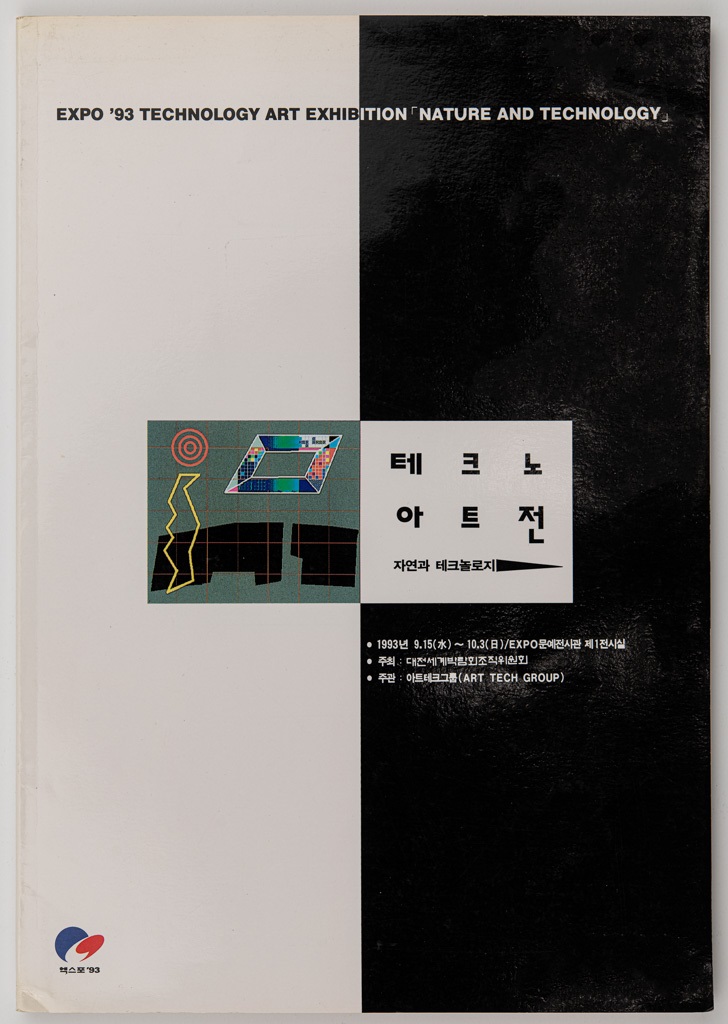
Daejeon Expo '93
Daejeon Expo ’93 was a world fair held for ninety-three days from August 7 through November 7 in 1993 at the Daedeok Science Town (now Daedeok Innopolis) in Daejeon Metropolitan City. The main theme of the expo was “Road to a New Leap Forward,” and its subthemes were “Harmony between Traditional Technology and Modern Science” and “Effective Utilization and Recycle of Resources.” Its official insignia consulted the taegeuk (supreme ultimate) symbol, and a baby space goblin named kkumdori based on designs of a goblin and an alien was chosen as the mascot. The Tower of Great Light (Hanbit Tower) symbolizing the science city Daejeon was erected in the Daejeon Expo Science Park. The exhibition halls were divided into a permanent exhibition zone and an international exhibition zone, and 105 exhibition halls were installed, including the Information and Communication Center, Space Exploration Center, Recycling Model Center, Resource Utilization Center, Technopia Center, and Kkumdori Garden. In particular, the Recycling Model Center presented a special art exhibition on recycling and a video art show under the theme of “Circulation and Creation.” According to official figures, 108 countries, thirty-three international organizations, and 200 domestic companies participated in the Daejeon Expo, and 14.5 million people visited it from home and abroad. The Daejeon Expo was significant in that it was the first edition held in a developing country in the history of expositions. It also received a review that with the participation of other developing countries in Latin America, the Middle East, and Africa, “it formed a new trend in expositions and brought these developing countries to the forefront of expositions as main agents.” Moreover, it was described as “the most remarkable information-oriented expo in the history of world fairs” and received positive reviews for “contributing significantly to the popularization of science technology.”






